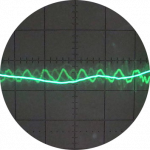R290 install location and future of R32
I've seen a number of images in posts of ASHPs that use R290 installed under windows. I thought these had to have minimum clearances from door and window openings, drains and so on in case of leaks. Is this not the case and it's perfectly ok to place in such a position?
Sort of associated for installation location ease, is anyone aware of the expected future life of R32 heat pumps? I know they are perfectly acceptable at the moment but the global warming value is quite high and I've read some, frankly confusing, reports that it is being phased down. This sort of implies it might be harder to purchase/install in the future, say post 10 years or so. I can't find any definitive answers on this so wondered if anyone closer to industry had any idea. Note, I'm not getting confused with R22, I'm definitely talking about R32.
That is a good question, and there's so much confusion about this. I'll reach out to my installer and heat pump expert network for guidance.
Get a copy of The Ultimate Guide to Heat Pumps
Subscribe and follow our YouTube channel!
Posted by: @andrewjI've seen a number of images in posts of ASHPs that use R290 installed under windows. I thought these had to have minimum clearances from door and window openings, drains and so on in case of leaks. Is this not the case and it's perfectly ok to place in such a position?
I firmly believe (but am open to correction) that the answer is yes (I also hope so, mine is!).
The operative word (I believe) is under, the protection zone extends either side of the unit and in front of the unit but not above. I seem to recall that Samsung diagram is clearest on this point because it shows a pseudo 3d view, but I may be wrong. I haven't yet seen any diagram which forces an interpretation that the protection zone extends above. If anyone has please say. Propane sinks, which is relevant.
I may be wrong.
4kW peak of solar PV since 2011; EV and a 1930s house which has been partially renovated to improve its efficiency. 7kW Vaillant heat pump.
@andrewj with the urgency of the need to reduce GWP internationally I would presume there would be a phasing out of new R32 installs. After all the environmental benefits are significant
“R290 has a GWP rating of 3, whereas R32 has a rating of 675.
Presumably there would be a 10 year support for spares after it being discontinued but that’s purely a guess.
Regarding gas hazard I think I saw a Heat Geek video where it was stated the safety legislation of window clearance is a hangover from gas boiler legislation where the gas supply might be piped town gas of enormous volumes, where a leak could be catastrophic. Whereas the volume of propane gas in a R290 heat pump is usually outside the property and of finite volume. (Not sure if the exact volume.)
Another advantage of R290 HPs would appear that the models I’ve seen generally have lower minimum operating outputs which means they do not cycle quite as much as R32 equivalents currently available. At least, that’s what I’ve seen, so far as Mitsubishi models are concerned.
@editor Thanks, that would be very useful. My property has windows across all sides so locating a R290 would be problematic depending on rules. An R32 would be ok hence my follow on question in respect to future proofing.
@sunandair It seems a bit strange that I could have a canister of propane attached to a bbq under my kitchen window but not a heat pump!! Hopefully someone has more info.
Posted by: @andrewj@jamespa The Vaillant diagrams do have doors and windows below the top level of the heat pump with relevant clearances but nothing in respect to anything above.
Which I personally take to mean that there is no restriction on what is above. Otherwise they would have to show a clearance and a protection zone
This 3d diagram form Samsung possibly makes that it clearer
4kW peak of solar PV since 2011; EV and a 1930s house which has been partially renovated to improve its efficiency. 7kW Vaillant heat pump.
@jamespa I see. Taking that and re-looking at the Vaillant images, the protective zone doesn't rise very far above the unit - no measurement given so presumably just a minimal clearance.
@andrewj will you be installing it yourself?
Get a copy of The Ultimate Guide to Heat Pumps
Subscribe and follow our YouTube channel!
Posted by: @andrewj@sunandair It seems a bit strange that I could have a canister of propane attached to a bbq under my kitchen window but not a heat pump!! Hopefully someone has more info.
I have an 11kg propane cylinder 1.5m below our kitchen window feeding our cooker.
Get a copy of The Ultimate Guide to Heat Pumps
Subscribe and follow our YouTube channel!
@editor No. I'm getting some quotes later this month so I'm just trying to work out what and where things might go and whether any choice I make in my head is moot and the reality is it has to be a Daiken because of location. I have Octopus and Heat Geek coming around so the choice is going to be between Cosy, Daiken or Vaillant. I know I'll get the low down at the time but I like to be informed.
The other thought I have is whether I should get in touch with Aira: it's not been clearly laid out why they want a buffer. In your video about this the message I picked up is that manufacturers want a buffer to provide separation to limit possibilities of blame if there is an issue. Although they seem to be really responsive from the postings so far so I could be doing them a disservice but in any case, given that the vast majority of installations don't need a buffer, why are they so insistent??
- 26 Forums
- 2,360 Topics
- 53.5 K Posts
- 215 Online
- 6,026 Members
Join Us!
Worth Watching
Latest Posts
-
RE: Mitsubishi Ecodan R290 10kW performance
@sheriff-fatman This is the table that I am familiar wi...
By Ecoste , 32 minutes ago
-

RE: My Powerwall 3 Consumes 3-4 kWh/Day in Self-Consumption: Is This Normal?
@caron, I'm looking into this for you... from my own pe...
By Mars , 3 hours ago
-
RE: New Fogstar 15.5kWh upright solution
SITREP #5 (I think) Milestone completed toda...
By GGW , 5 hours ago
-
RE: Octopus Cosy Heat Pump Owners & Discussion Thread
The FT levels off at either the set point OR the minimu...
By AndrewJ , 5 hours ago
-
RE: MyVaillant Connect Regular Disconnect
Thanks. Yes, if the time is consistently 11pm every nig...
By buckwem , 5 hours ago
-

RE: Speedcomfort radiator fans
My take on Speedcomfort radiator fans: If anyone w...
By Mars , 11 hours ago
-
RE: Midea ASHP – how to set weather compensation
@pash44pump I have yet to come across any Clivet or Mid...
By benson , 11 hours ago
-
RE: Who's your electricity provider and what's your tariff?
@transparent Thanks, this helps. Could it be that St...
By Batpred , 11 hours ago
-
RE: Clivet ASHPs and weather compensation
Simon did share a lot of very helpful advice. On furthe...
By ambris , 12 hours ago
-
RE: Home Assistant vs ESPAltherma.
@majordennisbloodnok Thanks very much.
By Ubert767 , 13 hours ago
-

RE: Setback savings - fact or fiction?
I could, but I think we can do better, by plotting hour...
By cathodeRay , 1 day ago
-
RE: Advice on internal circulation pump noise
Extend the primary branch and make sure you have more t...
By ASHP-BOBBA , 1 day ago
-

RE: External pipework insulation
Oh Dear! that's appalling pipe work, should've been in ...
By dgclimatecontrol , 2 days ago
-

RE: Jokes and fun posts about heat pumps and renewables
By Morgan , 2 days ago
-

RE: Controlling Daikin Altherma via P1P2 and Home Assistant
On the contrary, @toodles, that’s a lot of help. I’d ne...
By Majordennisbloodnok , 2 days ago
-

Parsnip, Bacon & Coconut Milk Soup
First let me say, I am only a cook because I am human a...
By Toodles , 2 days ago
-
RE: Electricity price predictions
Ben Watts posted on LinkedIn that he had updated this w...
By Judith , 2 days ago
-

RE: The good, the bad and the not that great – my heat pump installation
Small update, Emailed and Spoke to Midea UK and they ...
By Burtis , 2 days ago







